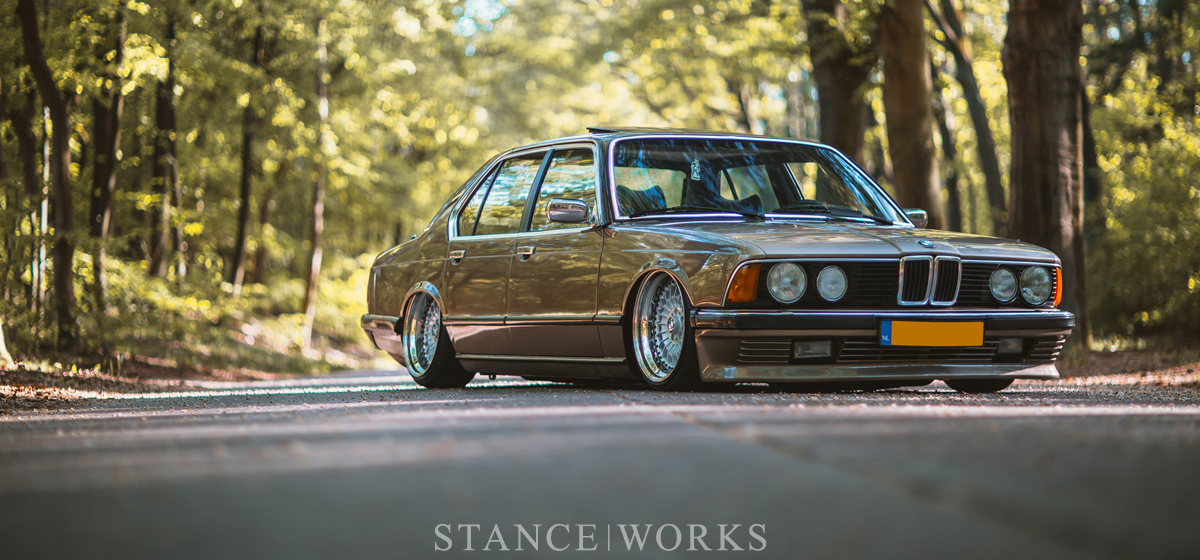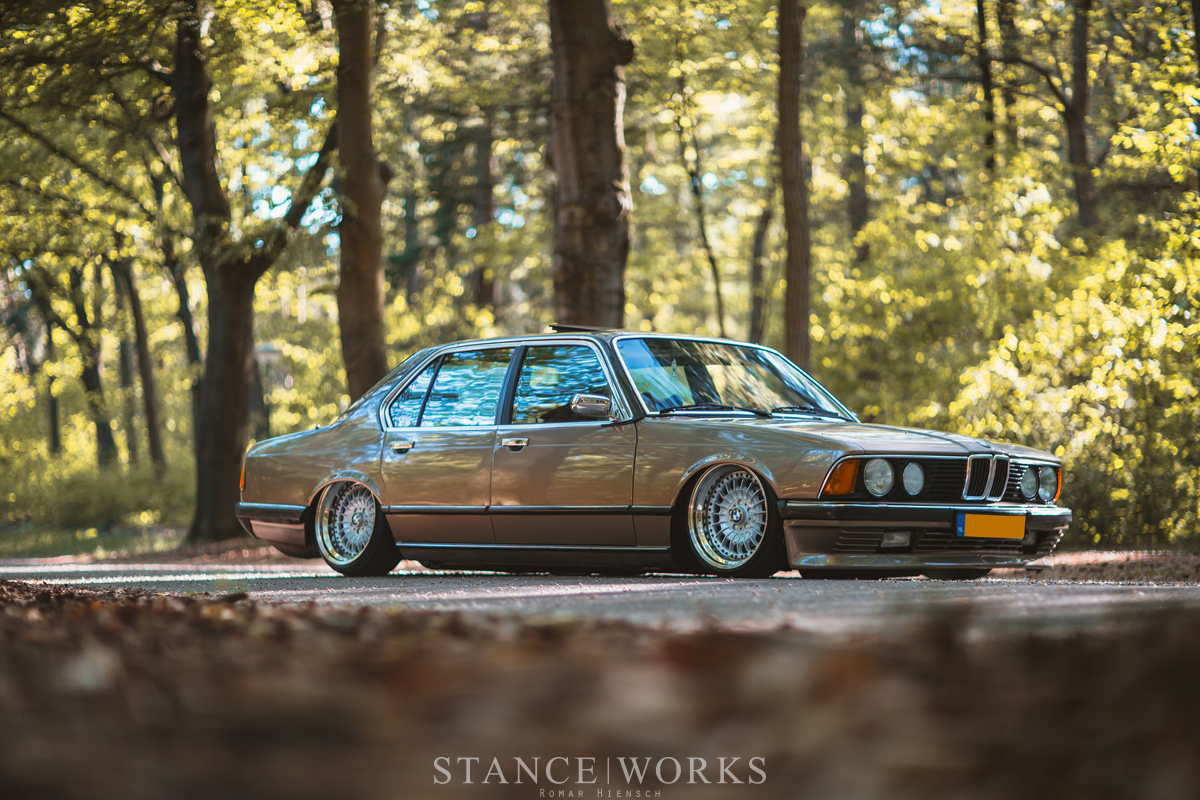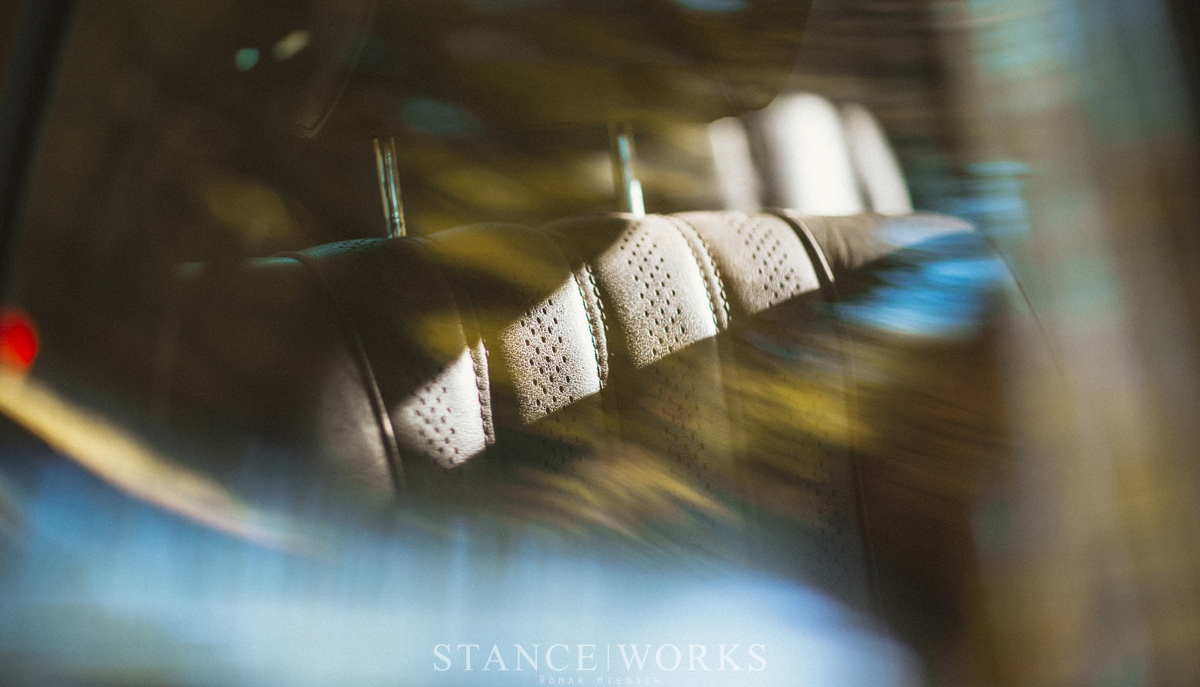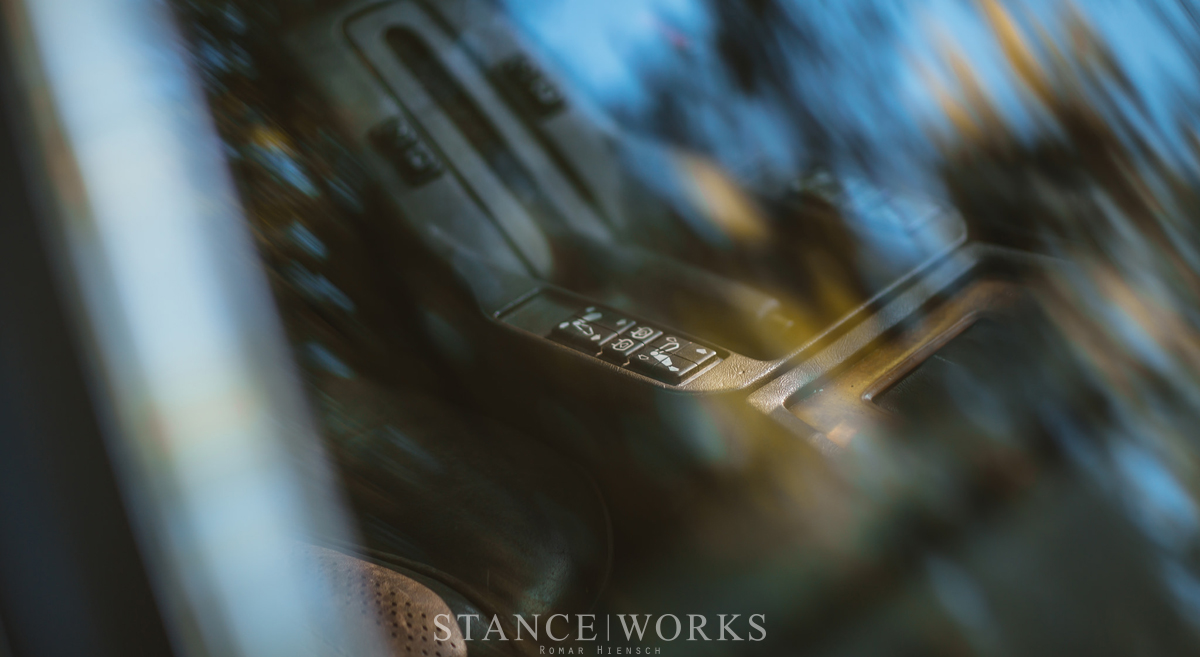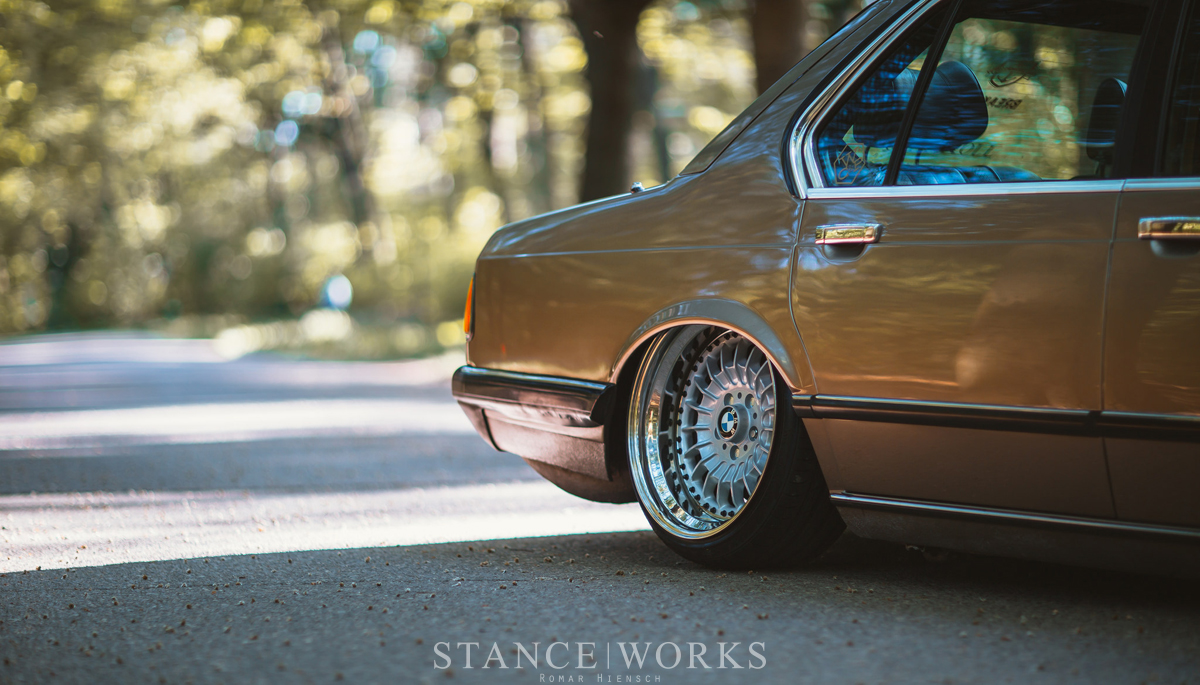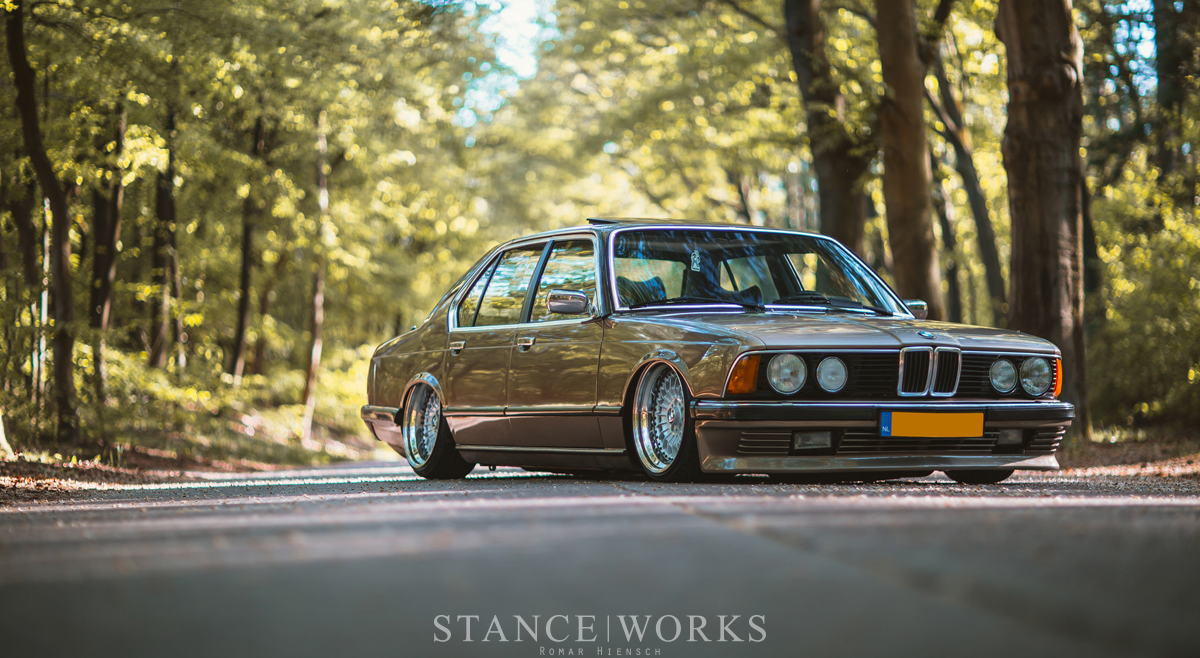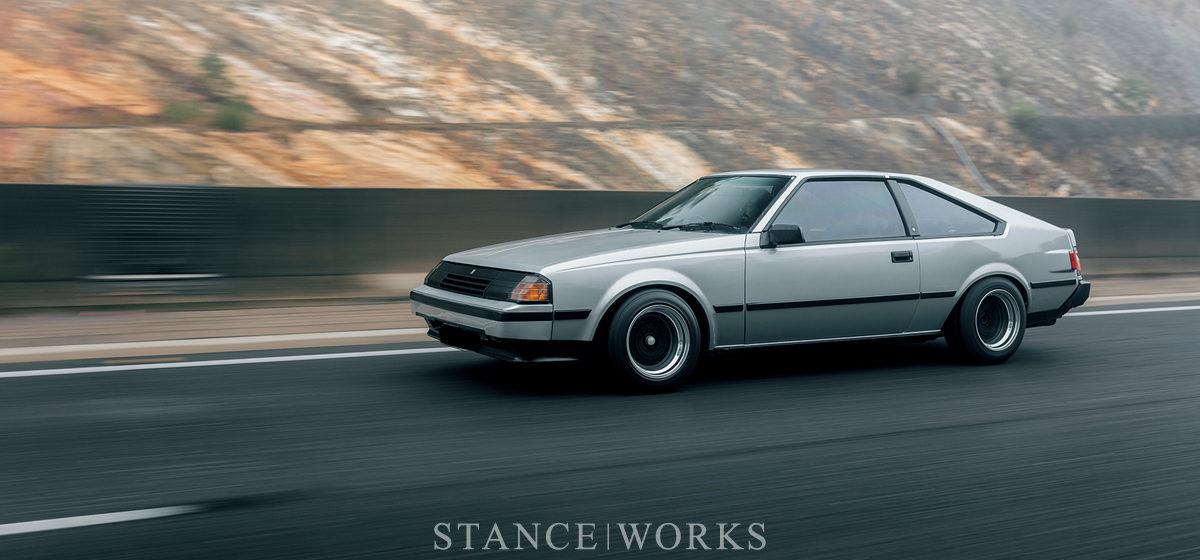In 1977, BMW unveiled the 7 series, with which they defined and entered a new realm of opulent touring sedans. Built to follow the E3 “Bavaria” sedan alongside the E12 5-series, the E23 introduced a new tier of driver-centric luxuries including power front seats with heaters, reclining rear seats, power windows, power mirrors, in-car telephone technology, built-in CAN Display, and extended leather trimmings. All of these items combined with a chassis largely similar to the 5-series, inspiring a car that could treat its driver and passengers to unparalleled comfort on the Autobahn, as well as considerable fun in the turns. By the end of its decade-long run, the 745i was producing nearly 250 horsepower in turbocharged trim, marking the dawn of high-performance luxury Autobahn stormers.
Denis Goleszny’s take on the E23 chassis is undoubtedly a bit different than anything BMW had expected 40 years ago upon unveiling the car, but that doesn’t mean the old 735i has lost its way. Embracing everything that makes it unique from its fellow BMW brethren, Denis’s car lies somewhere beautifully between stock and obviously not.
In the late 1970s, Air suspension technology was a far cry from where it is today. While companies like Air Lift have been suspending cars on bags for nearly 70 years, it has taken time for the technology to evolve, and only recently has digital control truly come into its own. With systems like Air Lift Performance’s 3H and 3P, it was a clear-cut place to begin the build of Denis’s 735i.
Wanting to lay the 7-series flat on the ground without sacrificing the driving characteristics the car is synonymous with, the move towards air ride seemed like a fitting choice for the E23, offering a hybrid balance between comfort, performance, and style. Armed with the Air Lift’s 3H digital management, Denis turned to WCP for a set of air struts to fit under the car. Following a bit of custom work and fabrication, the system was installed, giving Denis and the E23 the best of both worlds.
Many 7s came fitted with what are known as TRX bottle caps, their nomenclature designating their unique “TRX” dimensions. In the 1970s and ’80s, Michelin made the push for tires to move to metric sizing, eliminating wheel dimensions in SAE sizes like 16″ or 17″, and instead opted for sizing like 390mm or 415mm. The tires themselves proved good, but the need for abstract wheel sizing would prove to be their demise. Today, Michelin still produces TRX tires to support the numerous cars that adopted their proprietary sizing, but the tires can easily cost upwards of $300-500 each, often surpassing the value of the 30-40 year old cars they’re fitted to.
The result is that TRX wheels are often considered “garbage” in the BMW world, often tossed in the dumpster due to their near-uselessness. It’s a shame too, seeing as some of the TRX-sized wheels have been pretty cool, such as TRX sized BBS RSs, and unique, wonderfully-aged “bottle cap” designs. In ways, the bottle cap style has become synonymous with vintage BMWs aiming to stay true to their styling roots, and with that in mind, Denis turned to 2Polished for help in creating something unique and custom for his 7-series project.
2Polished machined down a set of the TRX caps, fitting them with 3 piece hardware and sizing them specifically for the large wheel wells that lurk beneath the E23. The factory silver centers have been paired with polished lips and upsized to 18 inches in diameter. The widths measure out to 8.5 front and 10.5 rear, behemoth in comparison to the factory specs, but right at home under the arches. The result is a set of wheels that straddle the line between vintage and modern, helping to define the overall style of an E23 thats been laid flat on the Earth’s soil.
Touches of custom work continue throughout the car, including a wood-trim mount for the Air Lift Performance 3H controller in the center console of the classic sedan. While it is stark in contrast to the rest of the interior’s early electronics, it flows smoothly, working in unison with the car to drive low and park lower.
The tasteful mods are highlighted by a complete respray in the car’s original shade of Bahama Beige – a color Denis fell in love with upon seeing the car. Initially, his intention was to purchase a classic Benz, but upon finding the lesser-loved E23, it was immediately a match made in heaven. The restoration began in short order, and yielded the car we see today. What’s to come is anyone’s guess, but with the progress made thus far, we’re eager for more, Denis.

